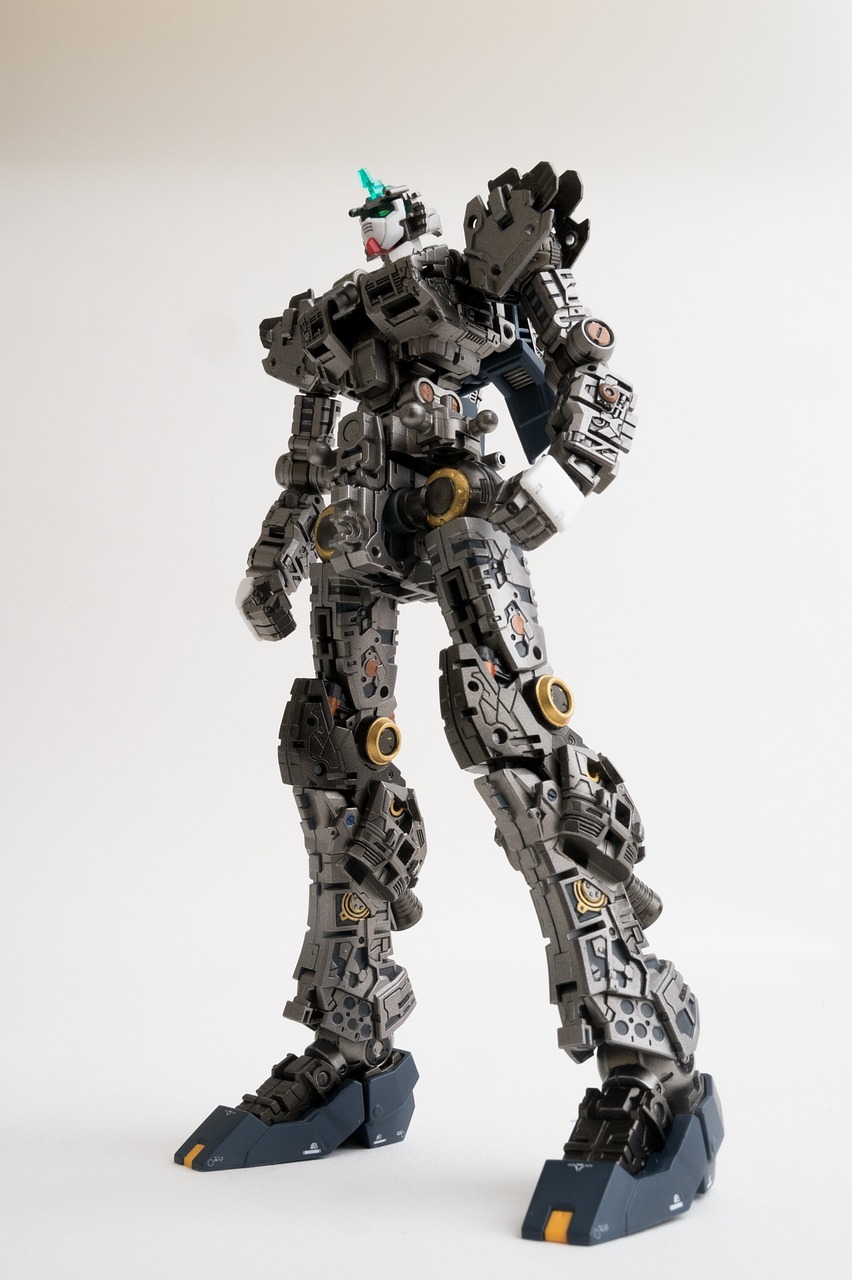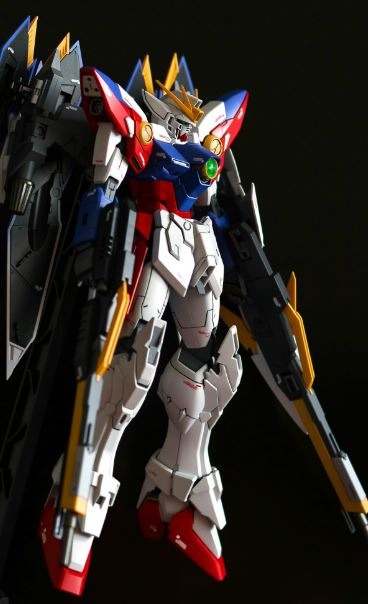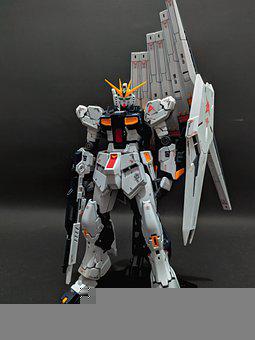The Different Types of Gundam Model Kits Explained
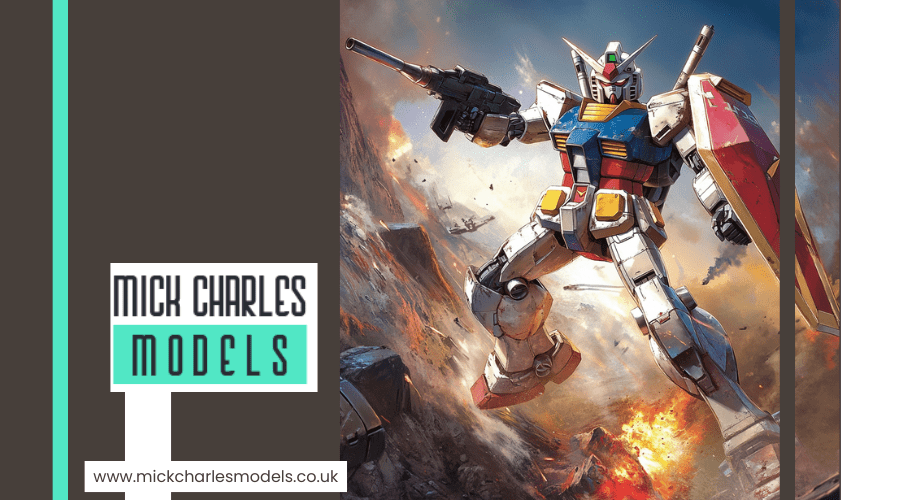
Gundam model kits, often referred to as Gunpla, are a thrilling hobby for many fans of the Gundam franchise. These kits come in various grades, each offering a different level of detail and complexity. From the simpler High Grade (HG) kits to the highly detailed and intricate Perfect Grade (PG) kits, there’s something for every skill level and interest.
High Grade (HG) kits are ideal for beginners. They are 1/144 scale, relatively easy to assemble, and provide a good introduction to the Gunpla hobby. For those looking for more complexity, Master Grade (MG) kits present a greater challenge with their 1/100 scale and included inner frame details. Real Grade (RG) kits, which are also 1/144 scale, offer even more detail and articulation, combining the best of HG and MG kits.
Perfect Grade (PG) kits represent the pinnacle of Gunpla craftsmanship. At 1/60 scale, they are the tallest and most detailed, with numerous parts and a high degree of articulation. For something different, Super Deformed (SD) kits provide a fun, stylized take on Gundam figures, focusing on exaggerated proportions and ease of assembly. Whether you are new to Gunpla or a seasoned builder, these diverse kits offer a rich and rewarding experience.
Understanding Gunpla and Its Popularity
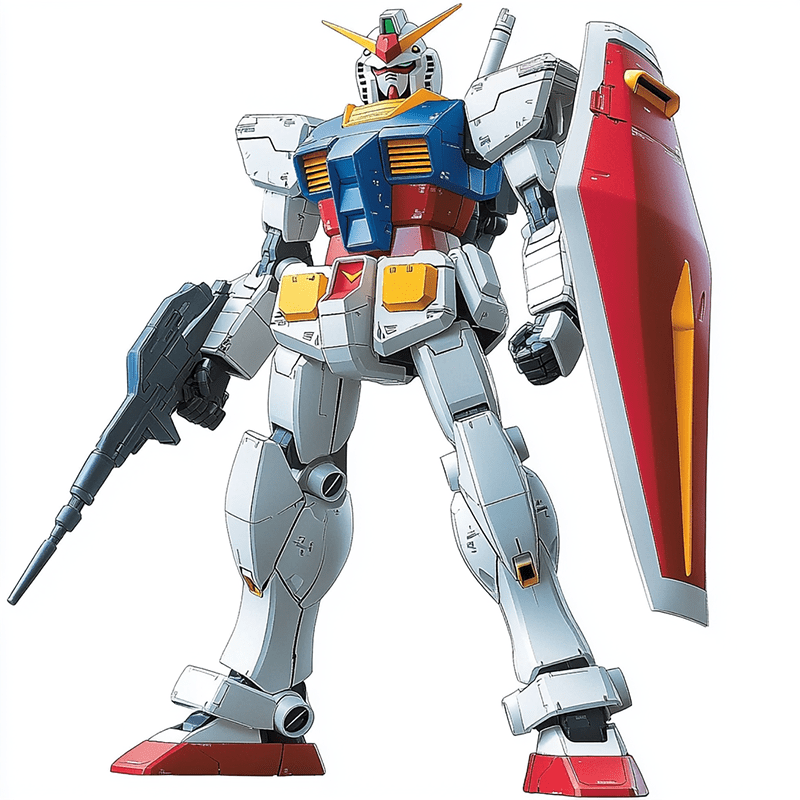
Gunpla, short for Gundam Plastic Model, represents a significant part of the Gundam franchise. These model kits have gained worldwide popularity, attracting hobbyists of all ages and skill levels. The following subsections explain what Gunpla is, the growth of the Gundam franchise, and its impact on the hobby community.
What Is Gunpla?
Gunpla refers to plastic model kits that are replicas of various mobile suits from the Gundam series. These kits come in many grades and scales, offering different levels of complexity and detail.
They are usually made of colored plastic and can be assembled without glue, making them accessible to beginners.
Some common tools used in Gunpla building include nippers, X-Acto knives, and sandpaper. The models are not only poseable but also feature working joints, enabling various display options. Gunpla kits offer hobbyists the chance to engage creatively, often customizing their builds with paint and additional decals.
The Growth of the Gundam Franchise
Gundam first appeared as an anime series in 1979 and has since expanded into movies, games, and merchandise. This widespread success contributed massively to the popularity of Gunpla.
Bandai, which manufactures Gunpla, began selling these model kits in the 1980s. Since then, the kits have continually evolved, featuring improved articulation and detail.
New series and models frequently release, keeping fans engaged. The franchise celebrates anniversaries with special edition kits, enhancing the collector's appeal. The convergence of an engaging story, varied designs, and regular updates keeps the interest in Gundam and Gunpla alive.
Gunpla in the Hobby Community
Gunpla has created a thriving hobby community with numerous online forums, social media groups, and competitions. Builders range from casual hobbyists to professional modelers, making the community diverse.
Events like the Gunpla Builders World Cup allow enthusiasts to showcase their skills and creativity. Tutorials and build guides are widely available, helping newcomers improve their techniques.
Local hobby shops and online retailers offer an array of Gunpla kits, making them easily accessible. Customization is a significant part of the hobby, with many builders modifying or painting kits to match their vision, thus adding a personalized touch to each model.
The Gunpla Grading System
Gunpla, short for Gundam Plastic Model, comes in several grades, each offering a different level of detail, complexity, and size. This section explores the main categories, including High Grade, Real Grade, Master Grade, Perfect Grade, and Super Deformed, along with some special editions.
High Grade (HG): An Overview
High Grade (HG) kits are the most common and beginner-friendly Gunpla models.
They are often 1/144 scale, making them small and affordable.
High Grade kits are known for their ease of assembly, with snap-fit parts and minimal painting required.
These kits focus on a balance of detail and simplicity, making them accessible for new builders while still being enjoyable for experienced ones.
Key Features:
- Scale: Typically 1/144.
- Detail: Moderate.
- Complexity: Low to medium.
- Articulation: Decent, but not as advanced as other grades.
Real Grade (RG): Advanced Details
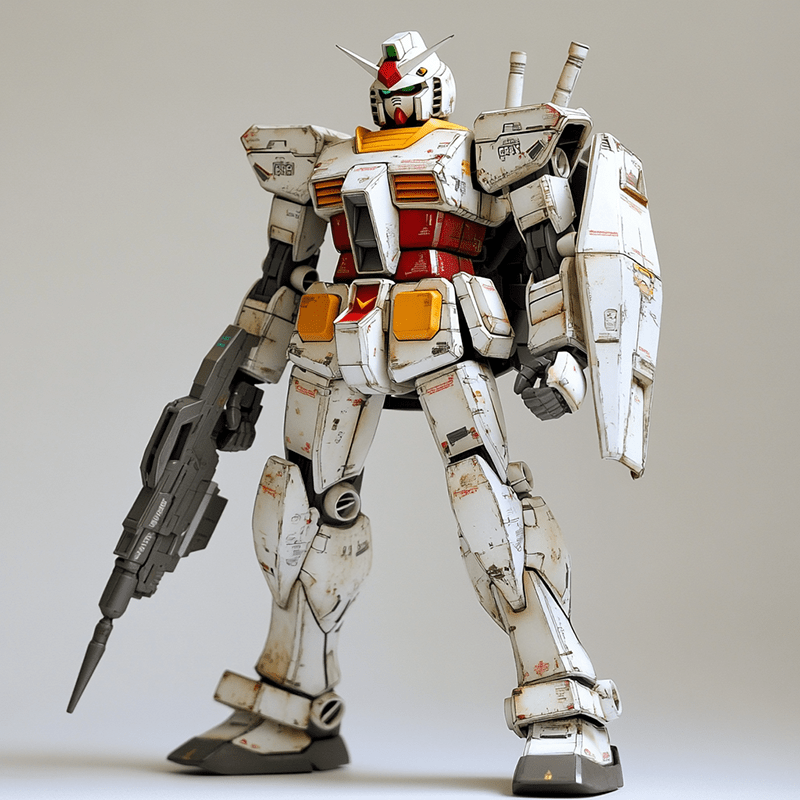
Real Grade (RG) kits were introduced in 2010 and cater to modelers who seek greater detail and realism.
These kits often feature a 1/144 scale like High Grade but have advanced inner frames similar to larger models.
Real Grade kits excel in color separation, detailed stickers, and intricate articulation points, resulting in highly poseable and visually striking models.
Key Features:
- Scale: 1/144.
- Detail: High, with excellent color separation.
- Complexity: Medium to high.
- Articulation: Advanced, suitable for dynamic poses.
Master Grade (MG): Superb Complexity
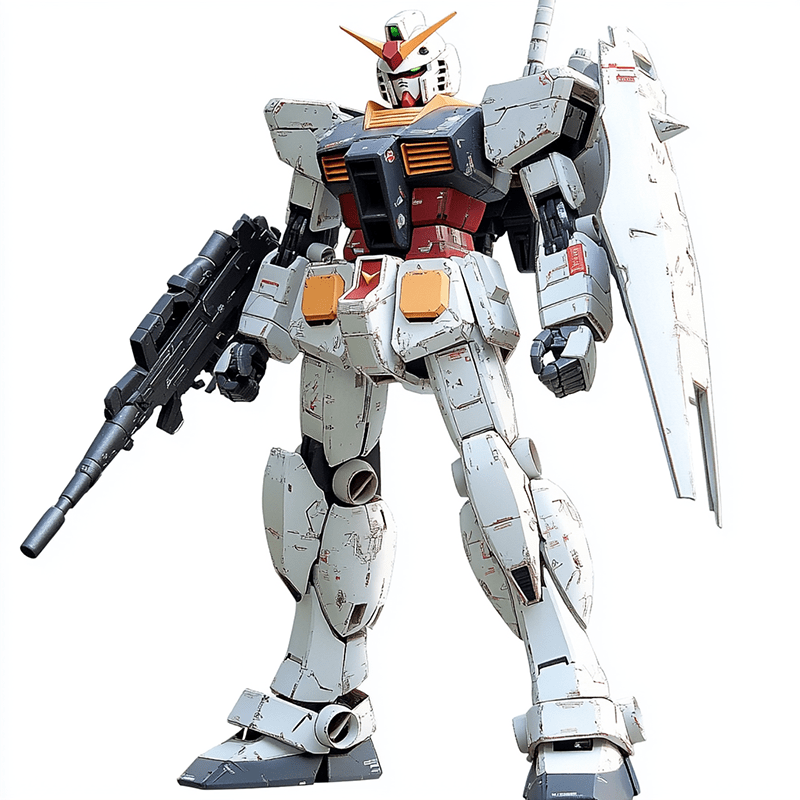
Master Grade (MG) kits are highly detailed and come in a larger 1/100 scale.
Introduced in 1995, they offer intricate inner frames, higher part counts, and better articulation compared to HG and RG kits.
These models often require more time and skill to assemble but provide a rewarding building experience with parts that fit precisely and allow for significant detail customization.
Key Features:
- Scale: 1/100.
- Detail: Very high, with customizable parts.
- Complexity: High, requiring skill and patience.
- Articulation: Excellent, with many points of movement.
Perfect Grade (PG): Peak Realism
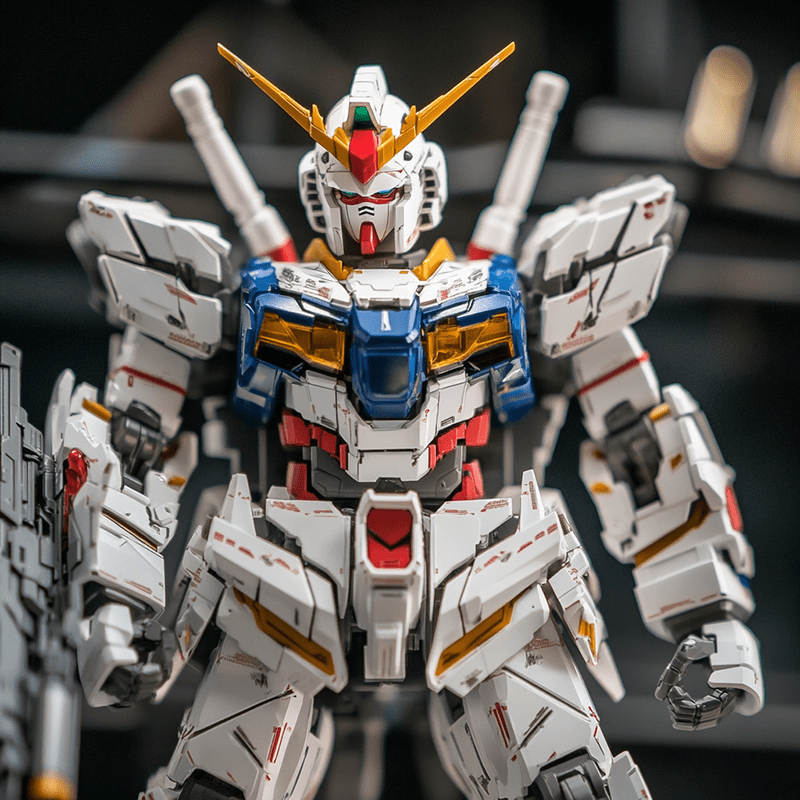
Perfect Grade (PG) kits represent the pinnacle of Gunpla engineering.
These 1/60 scale models boast unparalleled detail, inner mechanics, and articulation.
PG kits offer an immersive building experience, though they demand the highest level of skill, time, and financial investment.
These kits often include features like LED lighting and extensive articulation, making them prized by serious modelers.
Key Features:
- Scale: 1/60.
- Detail: Maximum, with intricate inner frames.
- Complexity: Very high, for experienced builders.
- Articulation: Top-tier, with mechanical and sometimes electronic features.
Super Deformed (SD): The Chibi Line
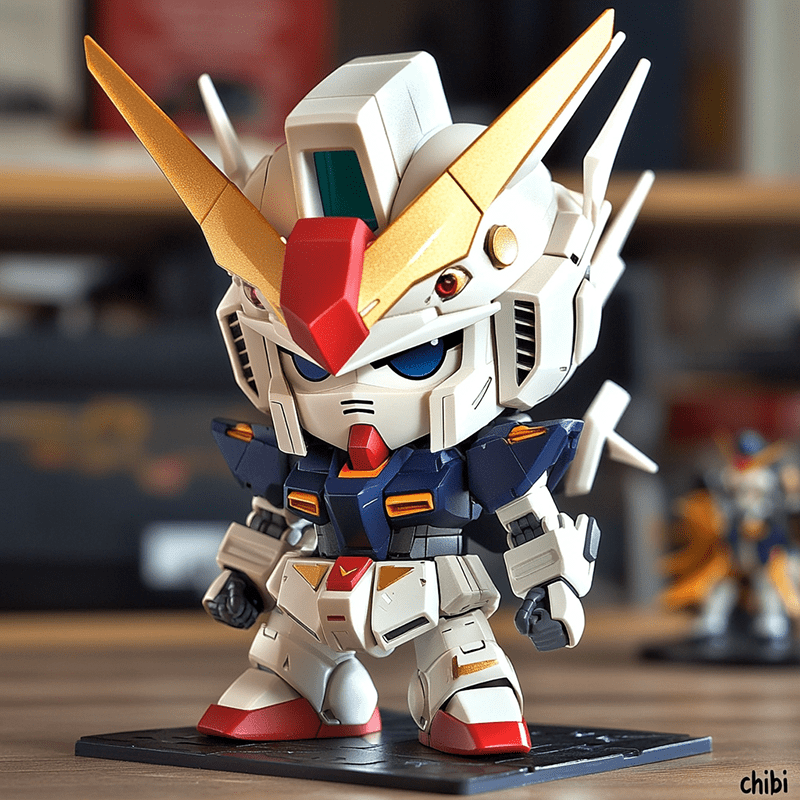
Super Deformed (SD) kits are unique in their exaggerated, "chibi" style.
These models are not to scale and feature oversized heads and smaller bodies, giving them a cute and playful appearance.
SD kits are generally easy to assemble, with fewer parts and simple construction, making them great for younger or beginner modelers.
Key Features:
- Scale: Not to scale, chibi-style.
- Detail: Stylized, focusing on cuteness.
- Complexity: Low, very beginner-friendly.
- Articulation: Limited, due to their design.
Other Grades and Special Editions
Apart from the main grades, there are other special editions and variations.
High Grade Universal Century (HGUC) focuses on models from the Universal Century timeline. EX-Model, Mega Size Model, and other limited editions provide unique builds, larger sizes, or special features not found in regular kits.
These editions cater to specific interests and offer additional variety in the Gunpla world.
Key Features:
- Variety: Includes unique scales and features.
- Detail and Complexity: Varies greatly.
- Target Audience: Collectors and enthusiasts looking for something different.
Exploring Gunpla Scales and Sizes
Gunpla models come in a variety of scales, each offering different levels of detail, size, and affordability. Understanding these scales helps hobbyists choose the right model for their preferences and skill levels.
1/144 Scale: Balancing Detail and Affordability
The 1/144 scale is one of the most popular choices for Gunpla enthusiasts. These models are 1/144 the size of the actual Gundam featured in the series. This makes them small enough to be affordable and manageable, yet detailed enough to satisfy many builders.
Most High Grade (HG) kits fall into this scale, providing a good balance between complexity and ease of building. The parts are pre-colored and often require minimal painting. These kits are perfect for beginners due to their lower cost and simpler assembly.
Despite their smaller size, 1/144 scale kits can be very detailed. They often include posable joints for dynamic displays. They are also handy for those with limited display space as they are compact.
1/100 Scale: The Middle Ground
The 1/100 scale models are larger than the 1/144 kits, offering more detail and a sturdier build. These models are 1/100 the size of the actual Gundam. They provide a good middle ground for hobbyists wanting more detail without the high cost of larger kits.
Most Master Grade (MG) kits fit into this category. These kits feature more intricate part separation and greater articulation. They are also pre-colored, although many builders choose to paint over the parts for a more custom look.
Because of their larger size, 1/100 scale models allow for more mechanical features, such as opening hatches and cockpit details. This makes them appealing to more advanced builders seeking a detailed and rewarding build.
1/60 Scale: The Large and Impressive
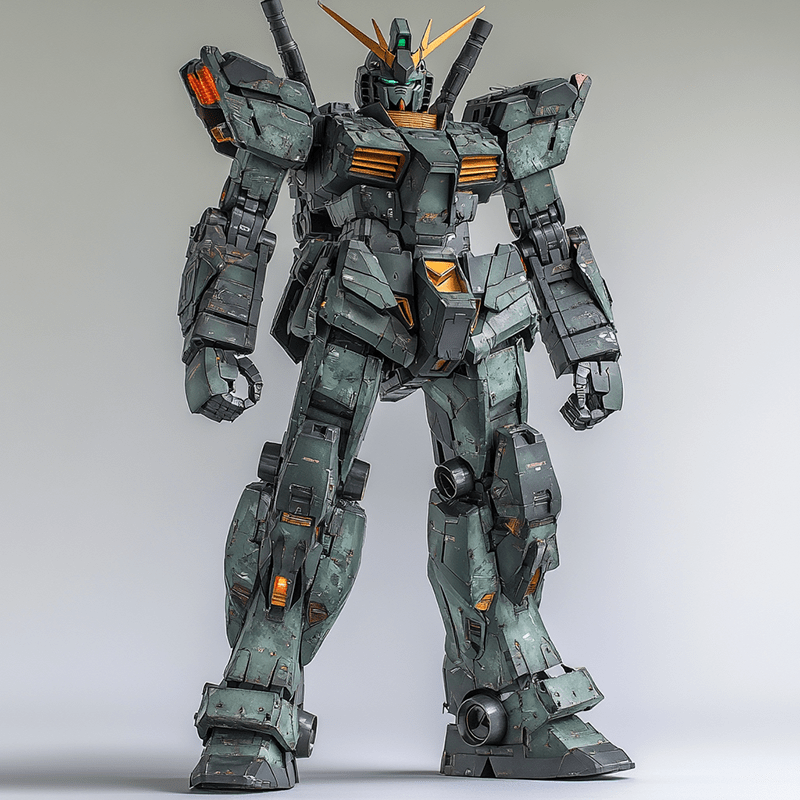
The 1/60 scale models are notably larger, being 1/60 the size of the Gundam. These kits are impressive in their size and level of detail, often featuring complex internal skeletons and advanced articulation.
Perfect Grade (PG) kits are typically found in this scale. These models are designed for serious hobbyists and often require more time and skill to complete. They feature high-quality parts, extensive details, and sometimes even LED lighting for added realism.
Building a 1/60 scale model is a significant investment, both in terms of time and money. However, the end result is usually a highly detailed, large model that serves as a centerpiece for any Gunpla collection.
Mega Size: The Largest Gunpla Kits
Mega Size kits are the largest standard Gunpla models available, often even larger than the 1/60 scale. Their size makes them extremely impressive on display and they can stand over half a meter tall.
Despite their imposing size, these kits are designed to be easy to build. They usually have fewer parts than expected for their size, which makes them approachable even for less experienced builders. The parts are often snap-fit and pre-colored.
Mega Size kits offer a different experience compared to smaller models. They are less about intricate building and more about the sheer impact of their size. They are ideal for those wanting a large, eye-catching model with relatively straightforward assembly.
Key Aspects of Gunpla Kits
Gunpla kits come with various features that make model building an enjoyable and intricate hobby. These features include the inner frame and articulation, armor pieces and color separation, decals and stickers, as well as parts count and building complexity.
Inner Frame and Articulation
The inner frame is the skeleton of a Gunpla kit.
Higher-grade kits, like Master Grade (MG) and Real Grade (RG), include an inner frame that provides support and improved poseability. This feature allows the model to mimic the movements similar to those of the Gundam in the series.
High articulation points give greater flexibility in poses. Kits with detailed inner frames often require more time and effort to assemble but result in more realistic and satisfying builds.
Armor Pieces and Color Separation
The armor pieces on Gunpla models snap onto the inner frame.
Color separation refers to how the parts come pre-colored in different hues, reducing the need for painting.
High-Grade (HG) kits have simpler color separation. Real Grade (RG) kits offer advanced color separation with smaller, more detailed parts that fit together closely to achieve a more refined look. This makes the models look more accurate without additional painting.
Decals and Stickers
Gunpla kits come with decals and stickers to add details.
Decals and stickers can include markings, emblems, and other small details that enhance the visual appeal.
Higher-grade kits often use water-slide decals that give a more seamless and professional look, whereas lower-grade kits usually come with easy-to-apply stickers. Applying these can add a significant amount of time to the building process, but the improved appearance is worth the effort.
Parts Count and Building Complexity
The parts count refers to the number of individual pieces in a Gunpla kit.
Higher-grade kits usually come with more parts. For instance, Real Grade (RG) kits have more pieces compared to High Grade (HG) kits, making them more complex and time-consuming to build.
Beginner-friendly kits, such as the SD (Super Deformed) and HG (High Grade), have fewer parts and simpler instructions, making them ideal for new builders. Master Grade (MG) and Perfect Grade (PG) kits, with their higher parts count, provide a more challenging and detailed building experience.
Building Your First Gunpla
Building your first Gunpla can be exciting and rewarding. It involves choosing the right kit, understanding the instructions, and having the essential tools ready for assembly.
Choosing the Right Gunpla Grade and Scale
For beginners, starting with a High Grade (HG) kit is recommended. HG kits are simple and have fewer parts, making them perfect for learning.
Grades:
- High Grade (HG): Easy and suitable for newcomers.
- Entry Grade (EG): Made for beginners; really simple and affordable.
- Real Grade (RG): More detailed, may not be best for a first kit.
- Master Grade (MG): Highly detailed, many parts, better for experienced builders.
- Perfect Grade (PG): Highly complex, best for experts.
Scale:
- 1/144: Easier to handle, less detailed, good for beginners.
- 1/100: More detailed, takes more time.
- 1/60: Very detailed, more for experienced builders.
Choose your kit based on your comfort level and interest in detail.
Understanding the Instructions
Before starting, it's crucial to read the instructions carefully.
Instructions usually include:
- Part Identification: Shows images and numbers for each part.
- Assembly Process: Step-by-step guide on how to connect parts.
- Tools Needed: Lists suggested tools like nippers and hobby knives.
- Color Guide: Indicates paint colors for different parts if you choose to paint them.
Take your time with the instructions. Understand each step before moving on. Don't rush, as mistakes can be hard to fix.
Essential Tools for Assembling Gunpla Kits
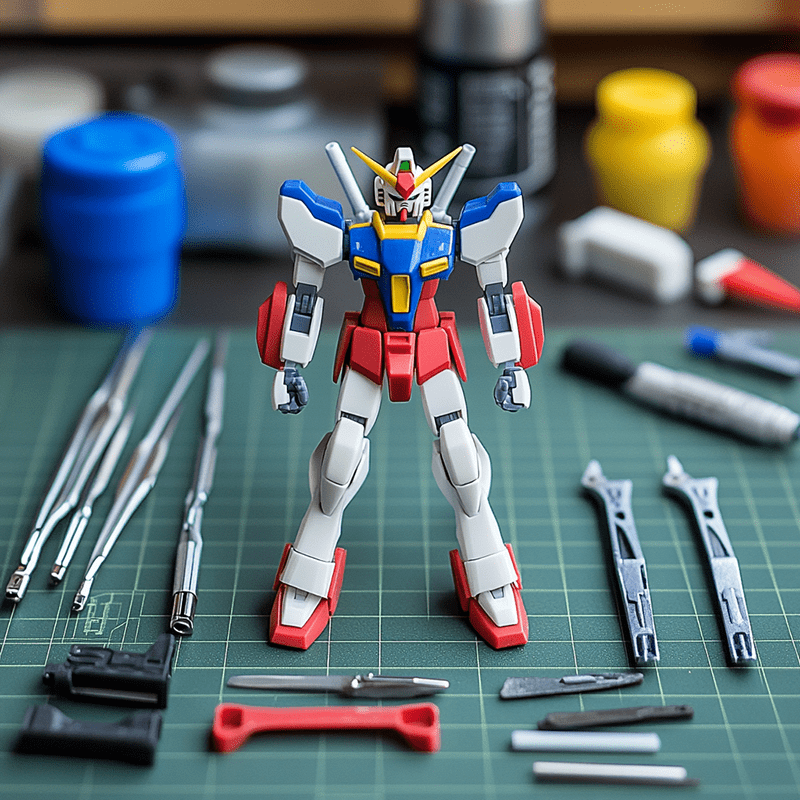
Having the right tools is key to a successful build. Here are the essentials for beginners:
- Nippers: Used to cut parts from the sprue (plastic frames).
- Tweezers: Help handle small parts and stickers.
- Hobby Knife: Good for removing extra plastic bits (flash) from parts.
- Sandpaper/File: Smooths out rough edges.
An organized, well-lit workspace is also important. It keeps your parts in order and helps you see what you’re doing.
Having these tools and setting up your workspace properly will make your first Gunpla build go much smoother. Enjoy the process and have fun as you bring your model to life.
Customization and Advanced Techniques
Expert model builders use several techniques to elevate their Gundam kits. Key customization methods include painting, panel lining, and advanced modifications.
Painting and Color Customization
Painting is essential for adding depth and detail to a Gundam model. Modelers can use acrylic or enamel paints. Airbrushes provide a smooth finish, while hand-brushing is good for smaller details. Painting enhances the model's realism and allows for unique color schemes.
Pre-shading is a technique that involves painting edges darker before applying the main color to add shadows. Post-shading can also enhance details by adding subtle color gradients after the main coat.
Decals and stickers can add extra details, like insignias and markings, to complete the look.
Panel Lining for Added Realism
Panel lining adds depth and emphasizes the separation between different parts of the model. Special panel line markers or thin washes of paint are applied to the grooves and seams.
Using a fine Gundam marker makes it easy to apply lines with precision. Washes of diluted paint can flow into panel lines and recesses, highlighting them naturally.
For a clean look, modelers can use cotton swabs or erasers to remove excess ink outside the lines, ensuring that only the lines themselves are darkened.
Advanced Modifications and Scratch-Building
Experienced modelers often modify their kits to create custom designs. Kitbashing involves taking parts from different models to create a new one. Scratch-building refers to creating parts from raw materials like styrene sheets and putty.
Adding metal parts and LEDs can enhance a model's realism and visual impact. Weathering techniques, such as dry brushing and applying pastel powders, can mimic wear and tear, making the model look battle-worn.
These advanced techniques require skill and patience but significantly elevate the detail and uniqueness of a Gundam model.
Display and Presentation
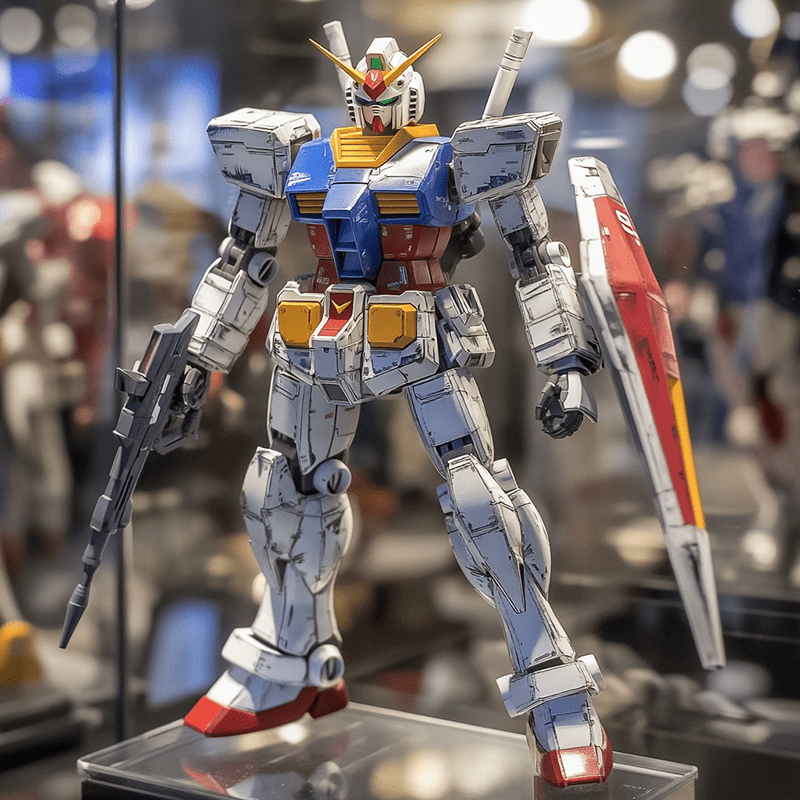
Displaying your Gundam model kits is as important as building them. You can enhance their visual appeal by creating dynamic poses, integrating LED lighting systems, and setting up a proper display area.
Creating Dynamic Poses
Dynamic poses make your Gundam figures look more alive and exciting. Poseability is crucial for achieving this. Many Gundam kits, especially Master Grade (MG) and Real Grade (RG), have a highly articulated inner frame.
Use the joints to create action scenes, like a mid-battle stance or a flying pose. Stands or action bases can help hold complex poses, giving the model stability. Adjusting the angle of the arms, legs, and head can make a big difference in the final appearance.
Integrating LED Lighting Systems
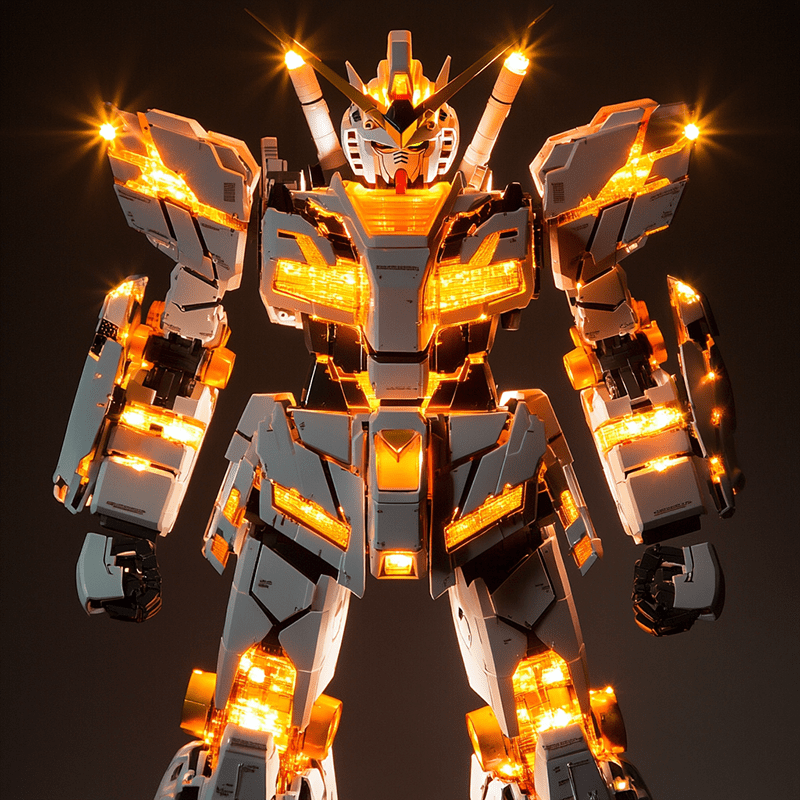
LED lighting systems enhance the visual impact of your display. Some Perfect Grade (PG) kits come with built-in LED lights. If not, you can add them separately.
LEDs can light up specific parts like the eyes, chest, or thrusters. Installing them requires some basic knowledge of electronics and wiring. Ensure that the lights are securely installed and avoid loose wires.
You can purchase LED kits designed for specific Gundam models. They often come with clear instructions, making them easier to set up. Proper lighting can highlight the details and colors of your Gundam kits.
Setting Up a Display Area
A well-organized display area can make your Gundam collection stand out. Choose a clean, dust-free environment. Shelves or display cases with glass doors are ideal for protecting your models from dust.
Consider the height and spacing of each shelf to accommodate different sizes. PG kits are tall and need more space, while High Grade (HG) kits are smaller.
Lighting your display area is key. Position LED lights to shine on your models without casting harsh shadows. Use adjustable spotlights to highlight specific kits. Keeping the area clean and organized ensures that your models remain in good condition.
The Gunpla Community and Resources
The Gunpla community is vibrant and offers a variety of resources to help both beginners and seasoned modelers. From online platforms to real-life events, enthusiasts have plenty of opportunities to connect, learn, and stay updated.
Online Forums and Social Media
Online forums and social media platforms are essential for Gunpla fans. Sites like Reddit and dedicated Gunpla forums provide a space for users to ask questions, share tips, and showcase their builds.
Facebook groups and Instagram hashtags like #Gunpla and #Gundam model kits are popular for sharing photos and getting feedback. Twitter is also useful for quick updates and networking with other builders.
In these spaces, users often share build diaries, reviews, and tutorials. They also discuss upcoming releases and rare exclusives. By participating in these communities, fans can stay informed and improve their skills.
Events and Competitions
Events and competitions are a big part of the Gunpla community. The Gundam Online Expo is a significant event where fans can see the latest kits and participate in talks and workshops.
Local and international competitions like the Gunpla Builders World Cup (GBWC) give builders a chance to showcase their skills. These events often feature exclusive items and giveaways that attract many enthusiasts.
Attending these events allows fans to meet other builders, get inspired, and learn new techniques. Competitions push builders to improve and innovate, making them a core part of the Gunpla experience.
Staying Informed: News and Announcements
Staying informed is crucial for Gunpla builders. Official Gundam websites and Bandai's news portals are the best sources for the latest announcements. These platforms provide information on new releases, upcoming events, and special exclusives.
Social media channels like Facebook, Instagram, and Twitter are also essential. Following official accounts gives fans timely updates and insights into new trends. YouTube channels dedicated to Gunpla also often feature news, reviews, and build guides.
Regularly checking these sources ensures that enthusiasts don't miss out on important events and exclusive offers.

